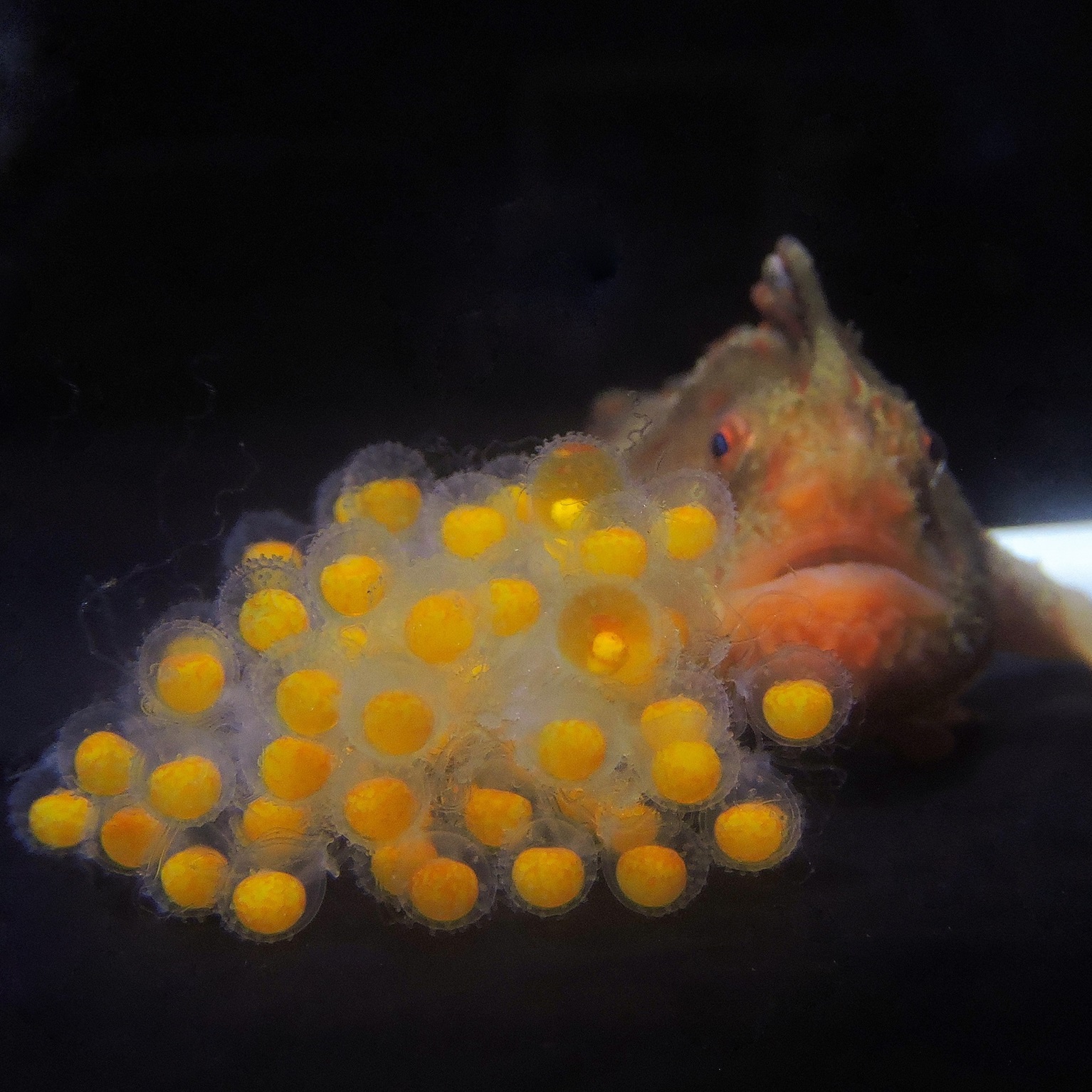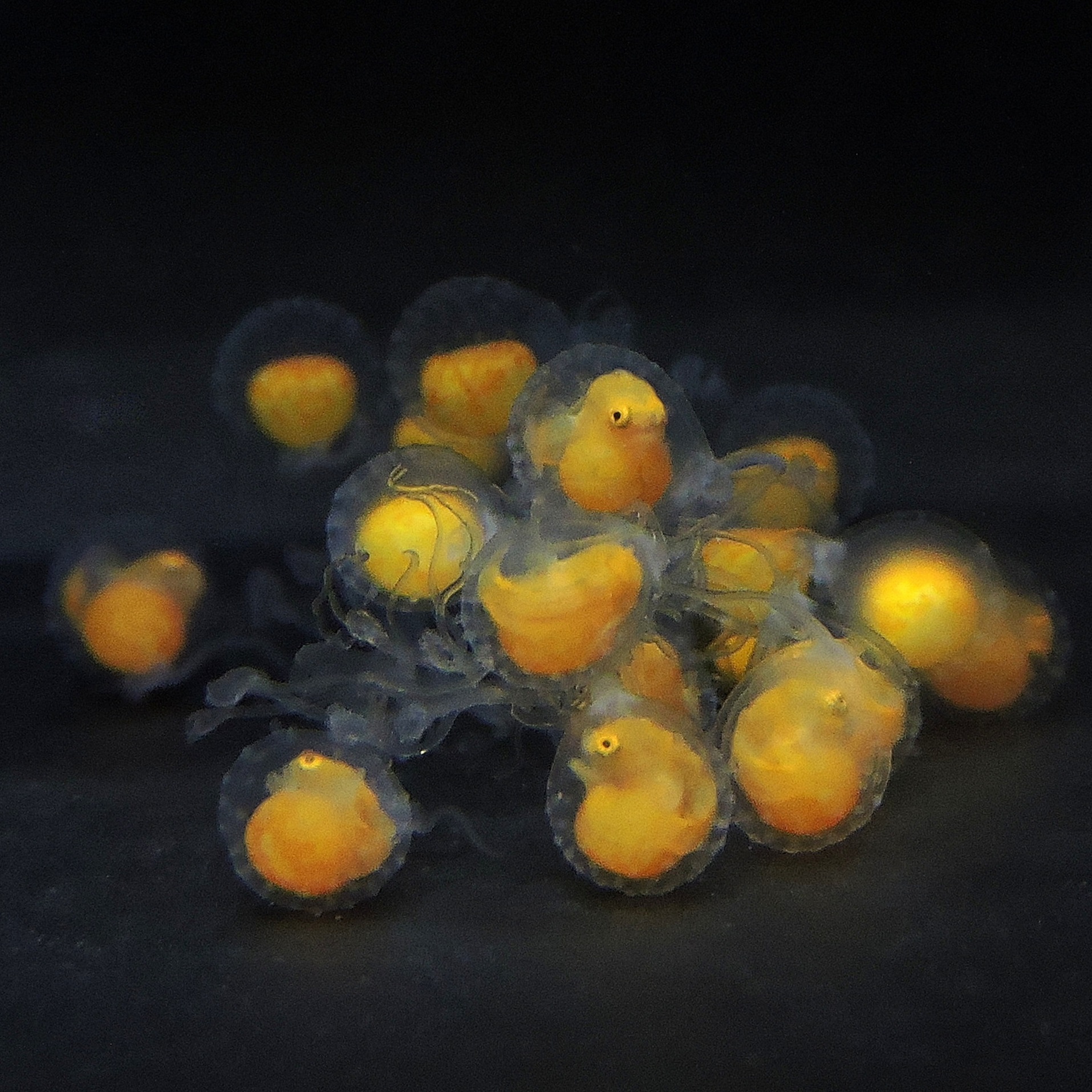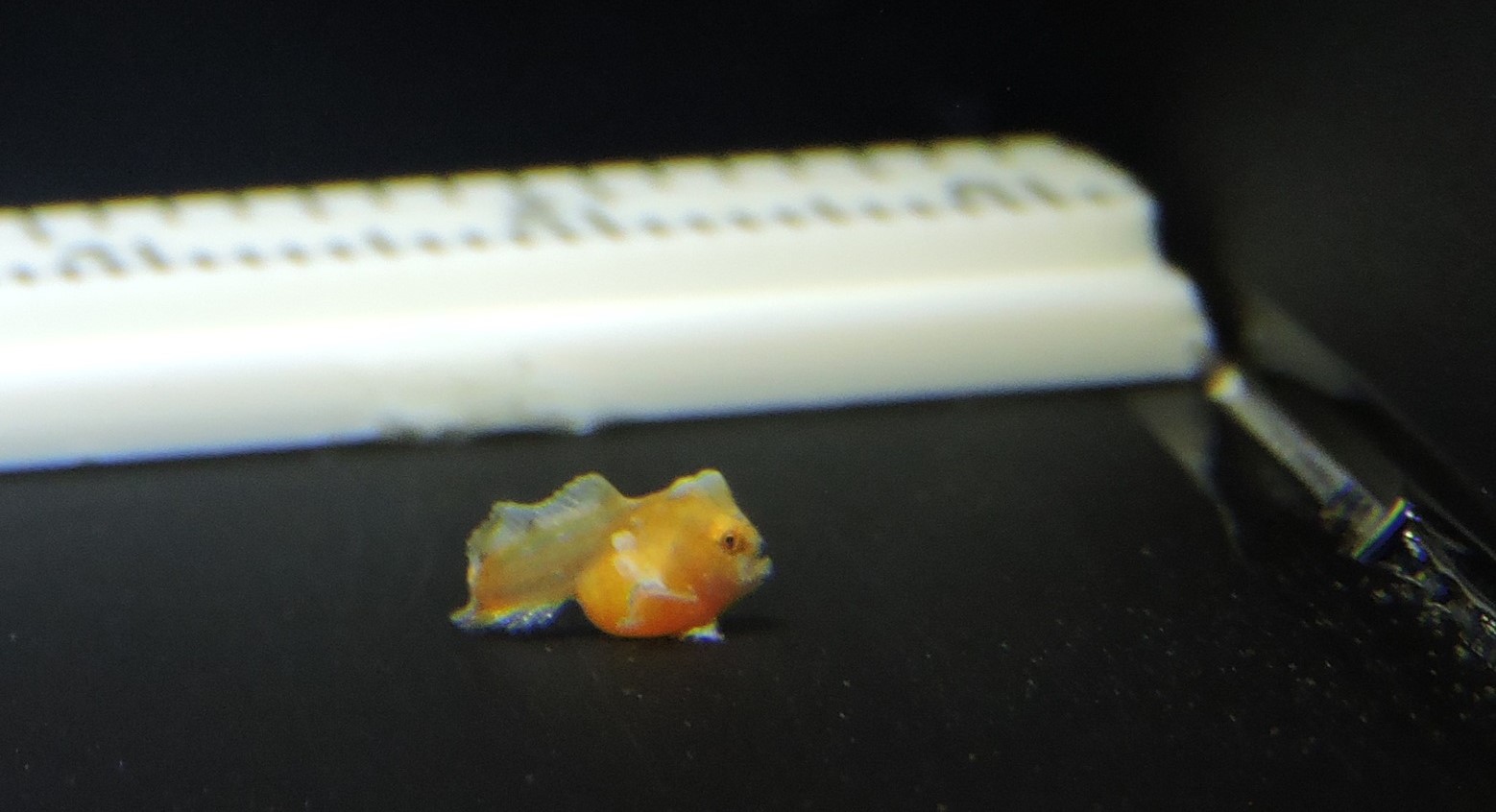
Twenty-one red handfish hatchlings have arrived in the second ever conservation breeding event in captivity – and it’s an essential part of protecting this critically endangered species from extinction.
“Despite being a small clutch, this is actually equivalent to a quarter of the known wild red handfish population in Tasmania – so it’s very encouraging to have successfully bred the species in captivity in two consecutive breeding seasons,” said IMAS researcher Dr Andrew Trotter, who co-leads the conservation breeding program at the University of Tasmania’s Institute for Marine and Antarctic Studies (IMAS).
Dr Trotter said the eggs took just over 50 days to hatch, and were cared for by their doting mother the entire time.
 “Our aim now is to grow this year’s hatchlings into healthy sub-adults so we can release them and bolster the dwindling wild population. Ultimately, we want them to breed in the wild.”
“Our aim now is to grow this year’s hatchlings into healthy sub-adults so we can release them and bolster the dwindling wild population. Ultimately, we want them to breed in the wild.”
The young are raised in captivity for around one year, before being released into the wild.
Before they are released, they go through ‘handfish school’, a conditioning and enrichment program that trains them to survive and thrive in the wild.
“We’ve significantly improved our knowledge of red handfish biology, which has improved our captive holding and breeding capability,” Dr Trotter said.
“Quite a few of our sub-adults are expected to mature next breeding season, so we’re very hopeful of producing many more hatchlings next year.”
IMAS threatened species and ecosystems team co-leader, Dr Jemina Stuart-Smith said the current red handfish will be held in captivity a little longer than usual.
 “We’re taking cautious steps around the release program for red handfish in light of the predicted marine heatwave off south-eastern Tasmania this summer,” Dr Stuart-Smith said.
“We’re taking cautious steps around the release program for red handfish in light of the predicted marine heatwave off south-eastern Tasmania this summer,” Dr Stuart-Smith said.
“We’re excited that the captive population and breeding program is making good progress, but there is more to do.
“We’re still behind where we need to be for habitat restoration and management at red handfish sites – and it’s these components that will be the deciding factor in the survival of the species.”
IMAS research into red handfish population recovery is carried out with support from Tasmania’s Seahorse World and in consultation with the National Handfish Recovery Team and the Tasmanian Department of Natural Resources and Environment (NRE TAS).
This important work is made possible through funding from the Foundation for Australia’s Most Endangered species and the Australian Government’s Department of Climate Change, Energy, the Environment and Water (DCCEEW), and the generous donors who support the Handfish Conservation Project.
Images - credit: Andrea Williamson
Published 29 November 2023